Using a modest sum of IHG points, I recently stayed at an EVEN Hotel in Midtown Manhattan. Remove the exercise equipment in the corner (EVEN Hotels promote a “wellness lifestyle”) and this hip room—with its modern furniture, tree-print curtain, and multicolored rug atop hardwood flooring—could be featured in many Las Vegas megaresorts along the Strip today.
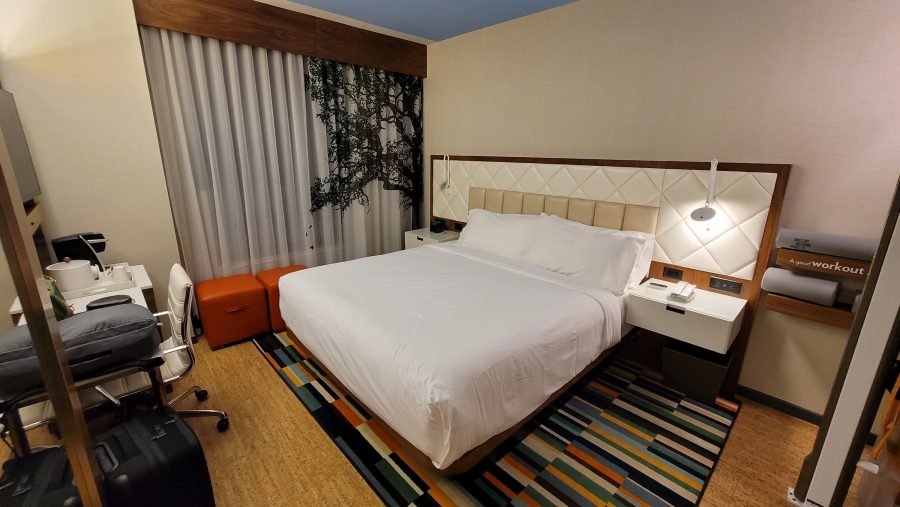
Now, is this a good or bad development? I’m not sure. But when I see a room like this outside of Las Vegas, I’m left to wonder, what makes a room inside of Las Vegas Vegasy? Is the threshold for Vegasyness like the one for obscenity—you know it when you see it? What distinguishes a Vegasy room from the vast majority of hotel rooms elsewhere? And is theming—a key differentiator in the past—dead now in Las Vegas?
In 2022, you’ll find no easy answers online to what Vegasy means. And while that’s bothered me enough to write this post, I do get that this is a niche question for Vegas nerds like me. I mean, I totally understand that for many visitors, at the end of the day, they simply don’t care: They’re in town, gambling, dining, relaxing by the pool, watching shows, what have you—and they’ll spend just a few hours in their rooms to recuperate, with the block-out shades all the way down (or attached together with hanger clips).
But for me, as gambling has become less and less vital to my Vegas experience, booking a cool Vegasy room has become more and more so. And generally speaking, I suspect the pandemic has made the room experience paramount for many more Vegas visitors than before—whether or not they care just how Vegasy it is.
How Vegasy were my Vegas rooms in 2021?
Over the past year, I had Vegas stays at Resorts World, NoMad, Wynn, and Caesars Palace. I also got to tour my pal E.’s room at Circa. By pointing out some aspects of each resort’s room design and decor, I hope to start articulating what I think makes a room Vegasy or not (I’m not going to discuss much about room pricing or service—price-wise, Vegas is still a relative bargain, but service-wise, it’s been a mixed bag, even before the pandemic). Maybe this will spark a conversation that will get us closer to a consensus of what that term we bandy about actually means. Of course, the meaning of Vegasy is slippery and subjective, but I figure there’s a Venn diagram overlap that this piece might help us get to. For instance, a wow factor has gotta be somewhere in that overlap, right?
For the record, I don’t think a hotel room is automatically Vegasy simply by being in Paradise or Downtown Las Vegas. One prominent case in point is the brand spanking new Resorts World—specifically, its Conrad rooms. I won’t go over them in too much detail, as I already did a full review of my stay in one last fall. The bottom line is that the Conrad rooms, while okay, leave me—and many others (like this blogger)—uninspired. Their design is generically chic at best. There’s absolutely no theming. There’s little to no innovation in its design or service (though some might count being able to order from on-site restaurants via Grubhub one). And the materials are on the cheaper side, so there’s no true luxury either. You could find similar rooms at corporate hotels in other parts of the U.S., so I don’t think the base-level Conrad rooms are very Vegasy at all.
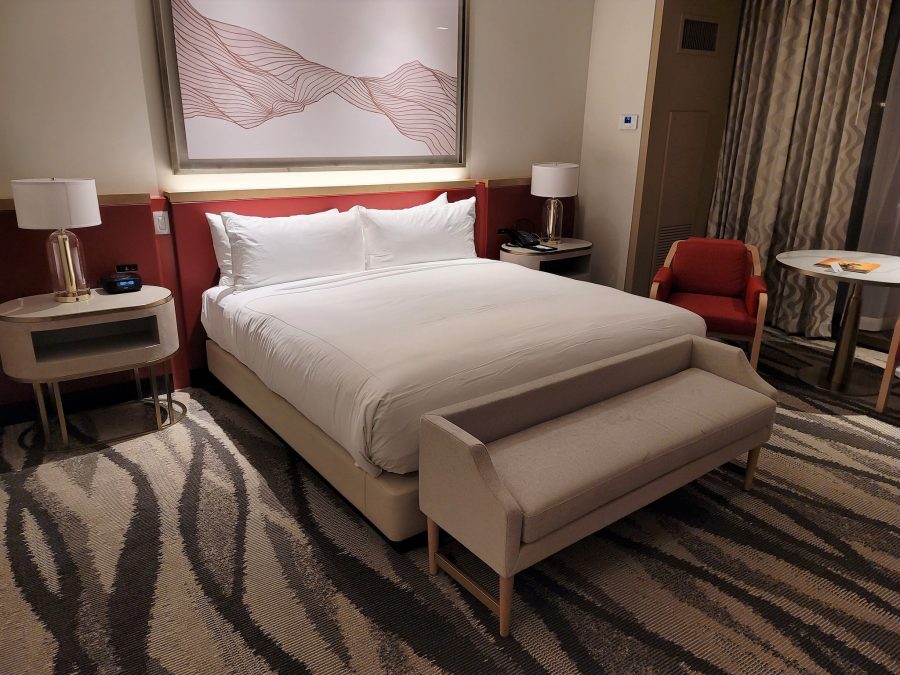
Turning to NoMad Las Vegas, I’ll say this hotel’s room product is tougher to evaluate for its Vegasyness than you might think. Having debuted in late 2018, this boutique hotel occupies the top four floors of Park MGM (formerly the Monte Carlo). With an Amex Fine Hotels + Resorts deal, I got to stay in a NoMad Grand Suite. At first blush, I didn’t think much of anything in the room was very Vegasy. While spending time there, I felt like I was in a posh, retro New York City apartment on the Upper East Side of Manhattan—in sharp contrast with its predecessor, HOTEL32 (whose theLOFTS suites were quite special and outrageous in their design).
But if you buy the premise that NoMad’s “theme” is luxury New York, then you could argue it is very much delivering on that theme—albeit with no side wink. To me, this is not unlike how the Venetian and Palazzo execute their theme in their rooms, though I like the suites at NoMad much better (and the service levels at this boutique property are superior). NoMad lacks the subtle irony or outright kitsch of classic Las Vegas theming, so that’s where the argument that it’s being Vegasy by delivering on its theme will fall flat for some. Regardless, I’m pretty sure Travel Fanboy and many of you readers out there aren’t gonna buy that NoMad even has a theme. So, while I’ll take a stay at NoMad over Conrad any day of the week, both are equally not very Vegasy.
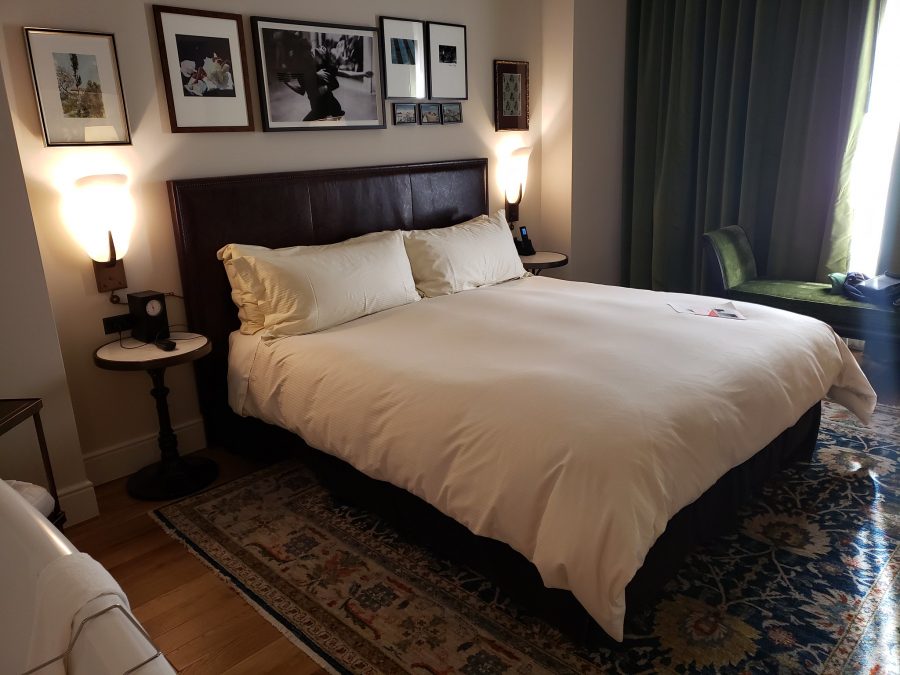
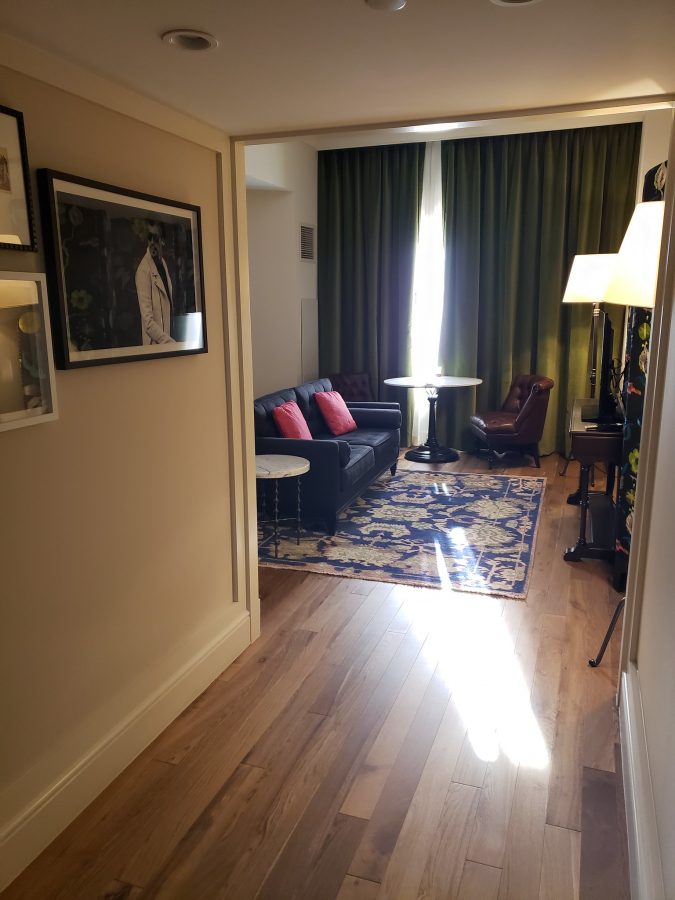
Next up is Circa, which debuted in late 2020. I got to tour one of its Single King rooms where my friend E. from Jersey was staying comped. The base-level room’s design isn’t ostentatious—it’s actually quite classy and on the reserved side, which I wouldn’t have necessarily expected from a “showman” like Derek Stevens (I guess he saved the spectacle for Circa’s sportsbook and Stadium Swim). But you do get that Vegasy vibe from the gold decorative pillow and maze-like pattern in the bedroom’s carpeting (you get nothing like this in either NoMad’s or Conrad’s rooms). To be crystal clear about where you’re staying—a Vegas gambler’s property—the bathroom has been covered with wallpaper featuring a dancing girl with cards, chips, and dice. It doesn’t get much more overtly Vegasy than that. The Stevens brothers clearly have an affinity for classic Las Vegas, and that shines through in aspects of their Circa room product.
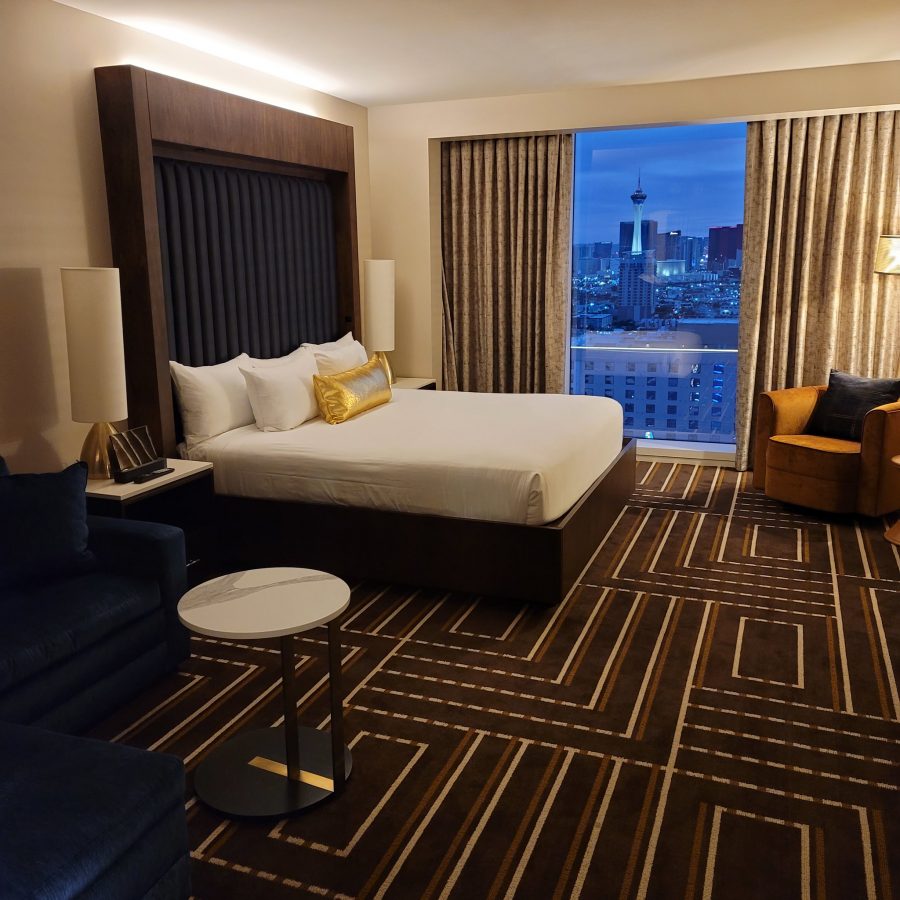
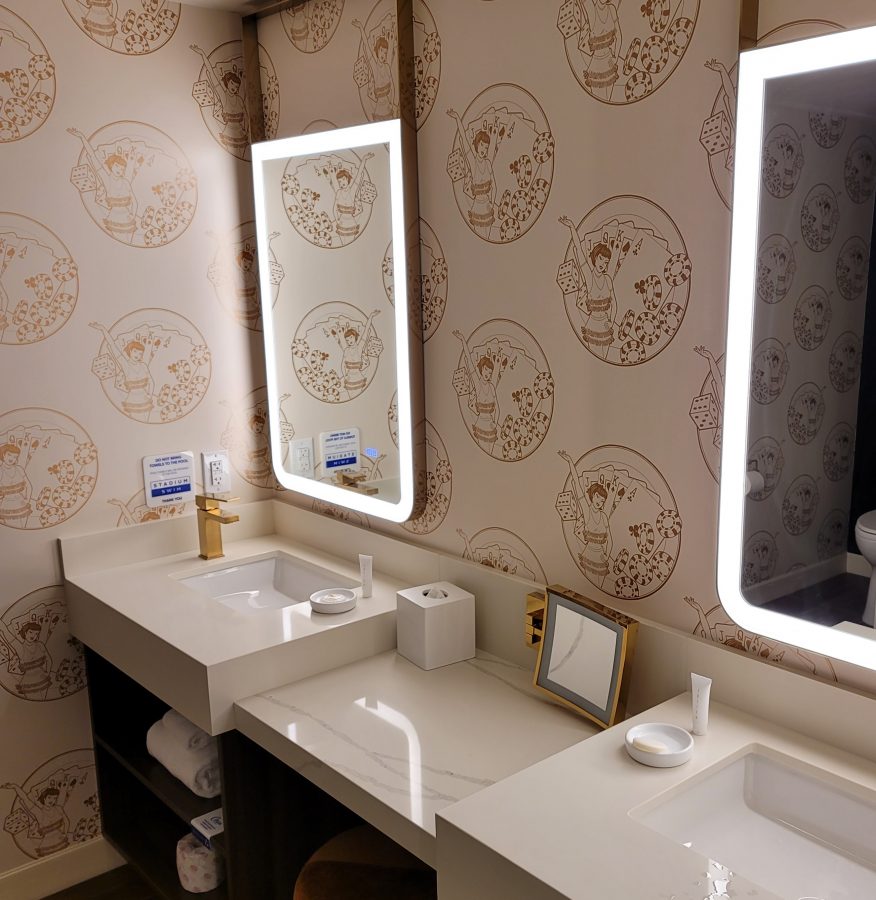
This past autumn I got to stay in a Premium King room in Caesars Palace’s Palace Tower (ugh, trying saying that fast a couple of times!). The rooms in this tower were last renovated in 2017. Weaving in its theme throughout many parts of the room product, Caesars Palace exudes a confident Vegasyness that’s unusual these days. I appreciate the property’s commitment to its theme, which shows up all over the room—at least in the one I stayed in (I can’t really speak to how true this is of the rooms in the other five towers).
Notice the meander pattern in the carpeting and drapes. It even shows up in the metal legs of the bench at the base of the bed. Check out the classical motifs of the wallpaper in the bathroom: There’s no mistaking where you are—a hotel resort with a kitschy take on ancient Rome. The base-level room, especially given its fun jet tub, is luxurious enough, but its design is playful, not at all self-serious. While I dislike the property as a whole (it’s an ugly cobbled-together labyrinth!), I do think it’s one of the few resorts in town that continues to play up its theme and thus its Vegasyness. You’re not bound to see the designs of Caesars Palace in other hotels in or out of Las Vegas. (Yes, yes, Vegas nerds, I know there are two other Caesars Palaces—one in Atlantic City and another in Windsor, Ontario. But to me, they pale in comparison to the original.) All that said, even Caesars could probably do a bit more to “theme up” its rooms—they still seem to be holding back (unlike Saul Goodman’s office.)
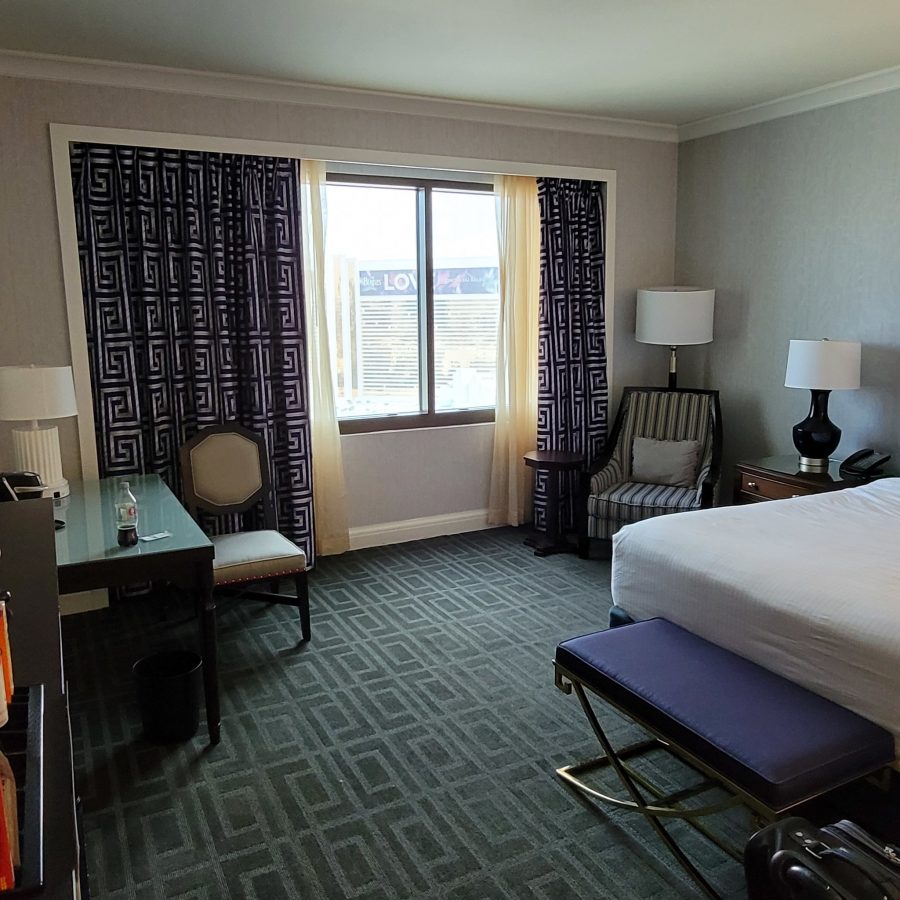
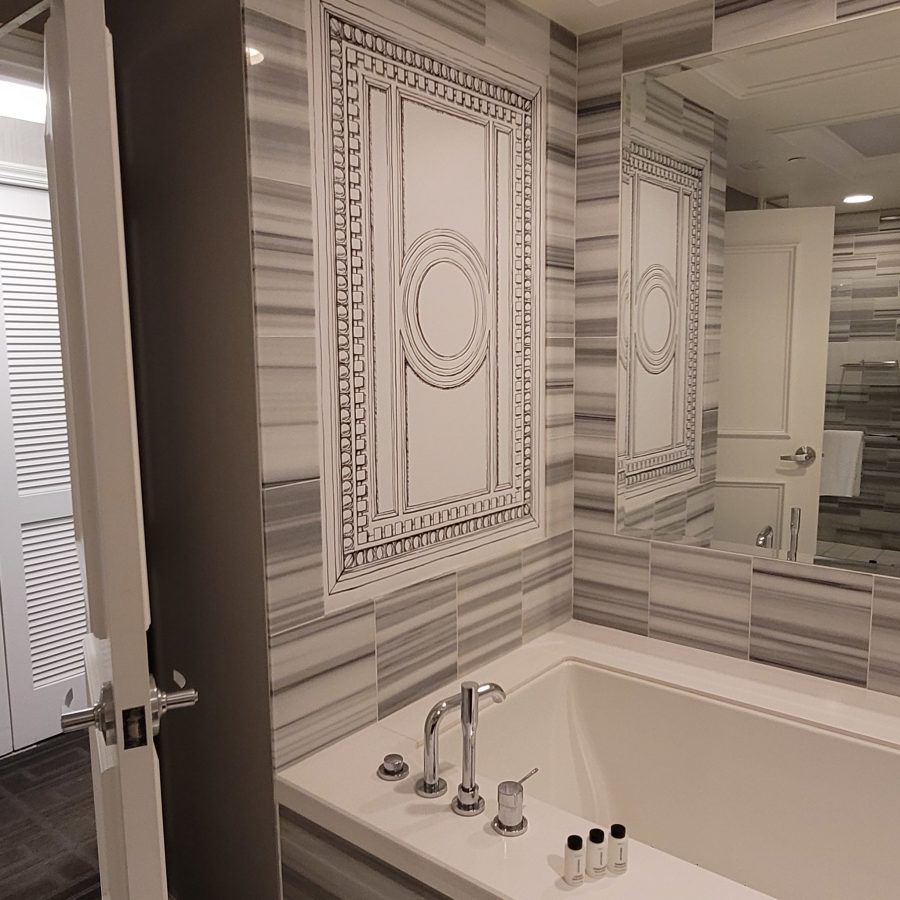
Finally, there’s Wynn Las Vegas, which many consider to be the pinnacle of Las Vegas resorts. I wanted to stay at Wynn before the powers that be “renovated” away Roger Thomas’s work in its rooms (the makeover is now well under way). I’d booked a base-level resort room, but since they were all sold out when I checked in, I got a complimentary upgrade to a Wynn Tower Salon Conference Suite. (Getting this upgrade was one of the biggest “jackpots” I’d won on all my visits to town—I ended up paying less than $150 for my one-night stay.) Unlike The Mirage, TI, and Bellagio (former Steve Wynn projects), Wynn Las Vegas seems to lack a theme (some say there’s a French influence). But Wynn doesn’t need a theme to be Vegasy (maybe its theme is simply its own Wynn-ness?).
Wynn Resorts is clearly an innovator in room design and technology (being able to control the shades and lighting from an iPad is just one example), and it never skimps on the quality of the materials used in its hotel rooms, especially in its Tower Suites. There is no sense of faux luxury in a Wynn room, as I’ve found in Venetian and Palazzo rooms. Wynn always features the real deal, and its over-the-top style is uniquely its own. Even without a theme, Wynn Las Vegas can transport you away from the everyday—its rooms, gaming areas, and restaurants rarely fail to wow, at least for me. For consistently delivering that brilliant experience, I find Wynn about as Vegasy as you can get. There are very posh Asian hotels with superb design and service that I’ve gotten stay in. But with a few exceptions, none of them came even close to giving me that ethereal feeling that I got from my one-night stay in a Wynn Las Vegas Tower Suite. The pictures don’t do the experience justice.
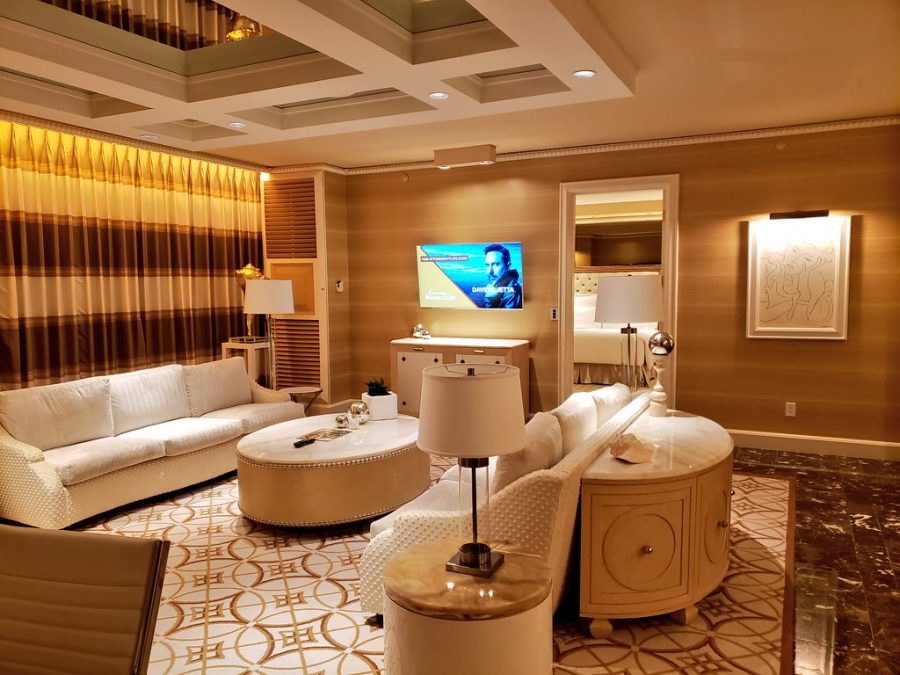
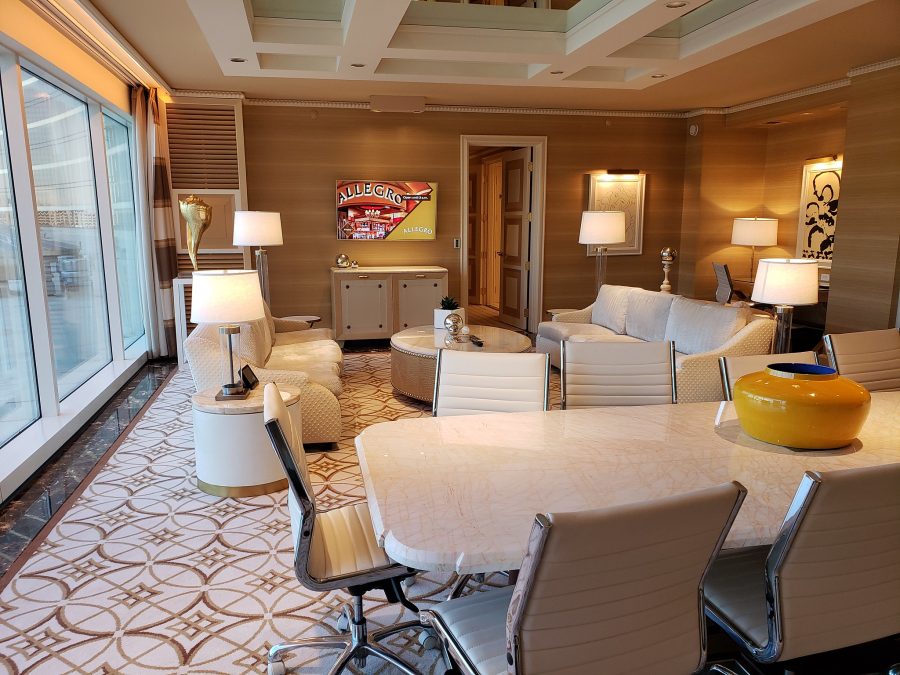
Closing thoughts
After recounting my recent stays in Las Vegas, I think the rooms there have become, on the whole, less distinctive over time. Today too many Vegas rooms could be hotel rooms in some other place. I don’t know if that’s a function of other cities having copied Las Vegas or vice versa (it’s probably a little bit of both). In any case, maybe none of this should be all that surprising, given that other features that used to differentiate Las Vegas from other cities have become widely available across the country (think sports betting). The lack of distinguishing Las Vegas traits may also be a function of a lack of vision. There are no more Steve Wynns, or even Sheldon Adelsons, in town (that’s a much-welcomed development to many, though for important reasons that aren’t the focus of this post).
Clearly, theming—which was once a hallmark of Vegasyness—is all but gone from the rooms, with a few exceptions. Even when theming is implemented in room design, it’s done without much flair or panache. And without a theme, very few designers can evoke the Vegasy feelings that a Roger Thomas can. In Adam’s late December 2021 TFB newsletter, he wrote: “I quite like the modern, crisp designs of the newer resorts. But Vegas needs to get back to the ostentatious; it’s what inspires people.” I couldn’t agree more. Vegas remains a special place, but unless operators and designers take bolder swings in terms of room and resort design, they risk making the term Vegasy less and less meaningful. Sure, the definition of Vegasy is not meant to be pinned down for good—like the city, its meaning is supposed to be living, breathing, ever evolving, dynamic. But these days, I feel like the term is a tad too vague, unfocused. For the moment, maybe the term reflects where the city’s at—it doesn’t know what it wants to become next.










